|
After an unforgettable evening in Fortrose it was time to meander South. Our only daughter, Kate, was to be wed in May and we had much to do, including tarrying awhile with more friends and incorporating a Viking Reunion. There has been quite a time gap due to weddings and other activities and it was becoming increasingly difficult to gird my loins to recall the final chapter of this adventure. However, once again serendipity came to the fore with a couple of confluent occurrences. While we had been staring across the Moray Firth from the Black Isle it had been apparent that we needed to visit the Culloden battlefield to try to align some of the pieces of our jigsaw. But two years later this brain fog had set in and I was struggling for a starting point for the last episode in our Scottish adventure. And so it was that Viking Craig[1] came to the rescue with the first of these occurrences. A neighbour of his, Carolynn, was contemplating her own reminiscences on the Irish borders and had reached a similar stumbling block. During a Zoom call with the two of them, in which I was attempting to dispense advice, it rapidly became clear that I should eat my own dogfood. Culloden The other occurrence was the arrival of our Spring edition of the National Trust for Scotland members magazine. Starting on page 54 is a perfect refresher course, a four-page spread on the Culloden site. Coincidentally, the subject of my only picture taken at the site was also featured in the article, the caption being: "Last One standing: Built in the early 18th century, Leach Cottage possibly served as a field hospital for government troops as the battle raged." Travelling as we were in our behemoth (occasionally fondly referred to as Campy), we had no appetite for cities and took the Inverness bypass. It wasn't long before we were straightening up in a car park that actually welcomed our four-wheeled pariah. The Culloden monument clearly welcomed visitors. We had previously gravitated to Glencoe in search of some understanding of the seemingly interminable Scottish conflict but the more we delved, the less clear it became. Why, in 2021, are the Scots so split between leaving and staying in the Union? There had been familiar patterns in Ireland and in South Africa, amongst others, where English hegemony has left such lasting division. The binary division I can sort of understand but it's the subdivisions that remain baffling to this day. Which Scots were/are in favour with union with England and why? Even the Jacobites had their subdivisions, not to mention fellow "rebels" going back to William Wallace in the late 13th Century. But, don't be concerned, I am not about to embark on a history of Scotland from 1297-1746. I wouldn't dare and, besides, millions, perhaps even billions, of lines have already been written from a multitude of perspectives. I suppose we were hoping to advance our own understanding of these 450 years of Scottish history but from my point of view, I cannot make that claim. Apart from the battlefield itself, which is ecologically maintained by hairy Shetland cattle and feral goats, the centrepiece of the installation is a magnificent museum that sets out to provide a balanced account of the conflict from the beginning and culminating in the Battle of Culloden itself. There is a long corridor that zigs and zags chronologically through the building with the government version on one side and the Jacobite version on the other. There is a huge amount of information and one is largely left to form one's own understanding. Personally, I would have to visit quite a few times more before I could even start to develop a clearer picture. The outcome, it seems, rested on a knife edge of bungling and some duplicitous allies by both sides, right up to the Jacobites' final denouement on this battlefield. Go there yourselves. Join the National Trust for Scotland before you do because you'll want to return if you can and also visit some of the surrounding sites where preparations were being made for the battle. We rounded our day off with a visit to the 16th Century Brodie Castle where some of the government officers had been billeted prior to the battle. The first picture below shows Shan in a reflective mood, digesting and distilling the information from an emotive day. The next day's travel involved a spectacular drive South to Loch Morlich (below) with a detour up the River Findhorn and down to Grantown on Spey. We could've taken a week on those 55 miles alone. Loch Morlich was a peaceful interlude before progressing South. We cycled the 13-mile round trip into Aviemore and kind of wished we hadn't bothered. Actually, the Old Logging Way trail was worth it for the tree above but we could have settled on the beach for an ice cream and later into the Pine Marten Bar for aperitifs. There was Black Isle Organic Beer there, too, which I hadn't been able to sample on the Black Isle. Tomintoul again Our next stop would be to visit Peter and Jenny in Blairgowrie but first we had to revisit Tomintoul, which meant retracing a few steps. This was only Shan's second visit to Scotland. The first one had been part of a 1983 (almost) dare, leaving Lake Windermere after breakfast, quick check on Ben Nevis stopping in Inverness to post a postcard, spending the night in Tomintoul before a brief visit to Edinburgh and a short walk on Hadrian's Wall en route to York. More than 700 miles in two days. In a Ford Fiesta. And it rained 99% of the time. Pushed the boat out in Tomintoul, though and stayed in the Richmond Arms Hotel where we couldn't afford dinner but met some of the diners in the bar afterwards. They recommended that we enjoy the route South. "Some of the best views in Scotland on the A939 between here and Cock Bridge," a new-found friend asserted. We set off early all those years ago and were soon shrouded in mist. There were points where we could barely see the edge of the road. We were young and foolhardy and pressed on, giggling nervously as the Lecht ski centre suddenly loomed from the gloom. Now, 36 years later, we were in Campy and hoping to retrace our footsteps with 95 miles to travel instead of 333. We had a lovely drive from Glenmore to Tomintoul. The Richmond Arms was still there, looking much the same. Shan popped in for a quick nostalgia trip. Chatted up the landlady, commenting that the carpet on the stairs was the same one that had been there in 1983 (seen below in a snap of an album "collage"). The sun was shining. We drove out of the town with some optimism. Guess what? We were soon shrouded in mist. There were points where we could barely see the edge of the road. We were old and foolhardy and pressed on, giggling nervously as the Lecht ski centre suddenly loomed from the gloom. Yes, the second picture above was taken from Campy's window in 2019. There should have been sunlit mountain peaks. We got to Cock Bridge, guiltily reflecting that two dead parents in a motorhome at the bottom of a valley in the Cairngorms would be a bit of a downer for Kate's wedding. Thankfully, from that moment on the visibility improved markedly and we arrived at the Dee at Braemar without too much further ado, as the next two pictures will testify. Before we arrived at Jenny's and Peter's dream home in Blairgowrie (last picture above) we were treated to what must be one of the most gorgeous drives in the whole of the UK. From Braemar to the descent into Blairgowrie it just gets better and better, with the possible exception of the Glenshee Ski Centre, although at least it didn't leap out at us from the gloom. I suspect we recognised a few stretches of road along the Black Water that have featured in the odd movie, which is no surprise given the scenery. It was wonderful fun to see Jenny and Peter again and sad that we won't be able to visit them there again as they announced that they were moving (and subsequently have moved) back to East Anglia. Peter and I worked in IT together and, in his case, it was evident in all the automation and eco-sensitive technology requiring its own computer room humming away in the background. It was sad to wish them farewell, wondering when we might meet again. Viking reunion Shelley-ann (nee Deale) and Craig Eriksen had not seen each other for near on 40 years. That would have been in Durban in South Africa where they had shared a Norwegian grandfather, Thoralf Eriksen. Both of them ended up in the UK decades ago. We were in Oxfordshire and the Eriksens in Scotland. There had been a few communications over the years via social media but, as is the way when bringing up children, they had been intermittent. In more recent years, however, Craig had moved to Stanley Mills on the bank of the Tay and conversations had turned to "if you're ever in Scotland/Oxfordshire ...". And so it was that we waved Jenny and Peter goodbye and embarked on a half-hour journey to the edge of the Tay and what I'd dubbed the "Viking Reunion", partly as a bit of fun and partly to diffuse Shan's nervousness at seeing her older cousin after all those years. As is often the case, any nervousness was dispelled as soon as we arrived. Craig came striding out to where we had parked in the visitor parking, a small distance from the rather imposing mill conversion peering over the Tay. He had given much thought to our short stay and was eager to explain his proposed itinerary. "Bring your van in and park in front of the house," he insisted. People living in Scotland are apparently not only universally hospitable but also friendly to nomads. When she returned from work, I immediately apologised to Craig's wife, Ann, for the monstrosity at their front door. "Don't be silly," she dismissed my protestations, "My parents have a camper, too, and they park it there when they drop by." Before Ann's return we had devoured a substantial piece of Craig's itinerary, starting with a long walk along the Tay. It's an idyll, really, and deserves a passage of its own in a future story. Craig is the common denominator in the two photos above. I did wonder what Max and Otto[2] would have thought of us going on the walk without them but Craig assured us that he would fetch them and they would accompany us for lunch. "Just a light bite," he reasoned, "I have plans for some fish tonight, but there is a great deli in Dunkeld I think we should visit." We did. It was, and Dunkeld has a Cathedral that Shan and Craig investigated. "Da Boyz" did not qualify as guide dogs so I waited at the gate and entertained their female admirers. With Ann returned from work, wine, accompanied by the fish and conversation, ensued in abundance and once again we were sad that it had been so brief. Suffice to say that the Eriksens have substantially added to the residual draw to return to Scotland. We had been so intent on catching up during our time in Perthshire that even I forgot to do it photographic justice. Filled with remorse, I stopped the van on another spectacular route not too far North of the Tweed to click the shutter on some wind turbines (below). It seemed fitting that the wind was providing relief to the earth[3] in today's constant quest for fuel. Returning home to England I really didn't wish to feel like this, because we love England and much of what it has to offer, but there was a distinct shift in Campy karma almost the moment we approached Berwick-upon-Tweed. I had been there before, and not been desperately impressed then, but that had been 20 years earlier and I'd hoped that recent reports of its prettiness would be worth a second look (a first one for Shan). We couldn't find a good enough reason to find somewhere to stop and headed on for Lindisfarne. I'd also been there before and was unprepared for the passage of time and the massive car park, far enough from the attraction to substantially increase the risk of being stuck on the island for the duration of high tide. We had to remove Campy and head, via Bamburgh, to the site we'd pre-booked. Bamburgh (Castle in pic above) is one place we would care to return to, provided that there was somewhere to park our motorhome within walking distance and stroll around this rather pretty town. We did have a place booked that night at Dunstan Hill that was a bit remote but served its purpose as an overnight stop on the last leg of our journey. We had planned to travel down the middle of the country to the East of the Yorkshire Dales having explored the West side on the way up. "You must drive down the B6160. Absolutely gorgeous," a number of people had advised us. It seemed to make sense. We'd been to Bolton Abbey on our bicycles from Ilkley during the British stages of the Tour de France a few years earlier and it seemed fitting to emerge there from a scenic journey through central Northumberland and Yorkshire. Given the seeming scarcity of motorhome berths in April 2019 I did a bit of phoning around. My last call was to a site in Aysgarth. A lovely, sympathetic person answered the phone. "I'm afraid we're full," she sympathised. She sensed the disappointment in my voice, continuing after a brief pause: "The local pub allows self-sufficient vehicles to stay overnight in their parking." Are you sure?" I checked, "It would be long way to travel only to find the car park full." "They'll be fine," she reassured me. "I'll ring them and tell them you're coming."" "Thank you, thank you, thank you ...". "It's the George and Dragon," my benefactor confirmed. We set off with a warm feeling. It was going to be a long journey but genuine hospitality awaited us. Arriving in Aysgarth a little travel-weary we found the pub easily enough. I parked at the furthest end of the car park while I went to announce myself to the publicans. The only person around seemed to be a young man behind the bar. I approached and before I reached the counter I got that chin forward head flick, the universal interrogator widely understood by the receiver to mean "What do you want?" Not to be put off I explained: "The kind lady from the campsite said she'd phone you and tell you I was coming. My motorhome's at the other end of the car park." He made no acknowledgement that there'd been such a call but indicated that it would probably be allowed if I didn't block any other patrons. "Thank you," I replied. "I'll just go and tell my wife and then I'll be back for a pint." By the time Shan and I had had pre-dinner libations and what was a pretty decent meal served to us by the person who was clearly the mother of my original interlocutor, Shan was feeling tired and emotional and announced that she was repairing to bed. "You know how I enjoy a nightcap amongst the locals, I'll be along a little later," I announced. In April 2019 in that kind of community the one subject I was determined to steer clear of was Brexit. But I wasn't from around those parts and they seemed to sense blood. For a moment I thought I'd been transported to Royston Vasey. Our landlady joined her husband behind the bar and summoned the son. He sidled in. The few locals formed a quorum. They'd decided, despite my never having mentioned anything remotely related to Brexit, they had me for a "Remoaner". I'd spent close to £100 in the establishment and couldn't wait to finish my nightcap so I could pay and leave. A good friend of mine claims that people either have a hospitality gene or they don't ... The next morning we were relieved and excited to get on to the B6160 and continue Southwards. At first it was wonderful. Achingly beautiful and properly wide enough for two lanes. Then the road started to narrow until it was inconceivable that two vehicles could pass each other in opposite directions. Especially if one of them was a motorhome. We're both very conscious of this and try to be considerate at every turn. With some people that's not enough. Very often it's those driving shiny Chelsea Tractors[4]. Their sense of entitlement rivals no other. The middle pic below illustrates a tiny opportunity to get off the roads so that a Range Rover can get past. One guy parked his on the tarmac while he got out to "help" me squeeze a quart into a pint pot. He then leapt into his Range Rover and sped away. I think I might at least have driven through and then helped my fellow travellers extricate themselves from what had been a shared predicament. To make matters worse, a few other cars had been backed up behind us and also took the opportunity to blithely go on their way. No assistance offered. As I've said. Scenery 100%. Empathy for fellow taxpayers 0%. I'd like to do it again. On a bicycle[5]. And believe me, that bicycle will be placed in its proper place on the road, 1.5 metres from the edge of the tarmac. The last black and white photo below was almost my undoing. Who knows how far back I would have had to reverse. Campy stands at around 3.1 metres. Ten feet nine inches is around 3.27. On the outside edges or the middle? Who knows? Only one thing for it: approach inch by inch while Shan minded the gap. D'you think any of the people getting impatient having to wait offered to help? Hell no. Chapeau to Shan, who spent most of the journey outside of Campy, directing traffic while grinning appealingly. And breathe ... and out into the sunshine at Bolton Priory. Cheeks regain their colour. That's it for our 2019 Scottish Serendipity. We had a wedding to catch.
Coming soon: Back to the main BLOGS for the time being, I suspect. We still have to complete our tribute to Solange and explore the von Thomann saga to wherever it takes us before returning to more straightforward memoirs. [Endnotes]:
1 Comment
What do Faeroes, Fair Isle, Viking, North Utsire, South Utsire, Cromarty, Forth, Forties, Tyne & Dogger have in common with Sir Lowry's Pass to Plettenberg Bay? The former contains one of the best pubs in Britain and the latter some pretty decent wine ... Weather forecast junkies and radio listeners will recognise another thread. Annie Proulx fans will understand why. Rosemarkie and Cromarty So, when Shan and I had settled down in our camp site with a panoramic sea view, had the obligatory first glass of wine (Harrison gin in my case) and ambled on the beach a bit, we contrived to plan the next day: "There's a bus to Inverness," I ventured. Scotland is splendidly served by buses. "I thought we'd agreed to keep clear of cities?" she responded, "It's so peaceful here." "Well, the same bus goes to Cromarty in the opposite direction, I replied. "What's at Cromarty?" my wife seemed vaguely interested. "Vikings, North Out Sierra and South Out Sierra for starters ..." Peeking out from the tranquil Cromarty Firth at Moray Firth and towards Utsira and Ferkingstad in Norway. The bus picked us up in Rosemarkie and dropped us off at the waterfront in Cromarty. In the absence of a grand plan we strolled along the aptly named Shore Street (above). The street is actually pretty straight despite the pano distortion provided by my phone. It didn't take long before we were heading out of town but we were hungry and resolved to meander the short distance to parallel Church Street through some pretty lanes. It seemed to us that Church Street must be the hub of Cromarty. The pub had stopped serving food by the time we got there but we managed to find something to eat in Couper Creek, which had fab ice cream. Wondering while wandering how we were going to fill the time (the museum was closed at that hour) between lunch and our return bus, much to Shan's delight we stumbled upon the treasure trove that was Ingrid's House. My dear wife had been searching for accessories for her outfit for Kate's[1] and Andrew's wedding the following month. She fell in love with a choker and a few other things, besides. Laden with loot, we still had some time to kill before our rendezvous with the return charabanc. While hovering about at the bus stop, we thought we'd kill a bit of time wandering around aimlessly and strayed down Bank Street. We didn't get much further than the only shop dedicated to Dutch Cheese in the UK[2]. Flippin heck, the Netherlanders are pretty famous for their cheese and it had never occurred to me that there was such a huge gap in our market. There was more of interest further down the street but we had to rush out to catch our bus. Maybe we shouldn't have taken quite such a laissez faire approach to Cromarty. The Scottish bus drivers we encountered seemed always helpful and we were allowed to leap off early for a beautiful nature walk on the Fairy Glen Trail back to Rosemarkie (below) The Rosemarkie Camping and Caravanning Club Site has sweeping views along the golden sands of the Moray Firth and across the water to the 18th Century Fort George. Fortrose and Avoch Following our previous day's bus ride, we decided that a bit of Active Travel[3] would be appropriate to stretch our legs a bit and head in the opposite direction from Cromarty. This turned out to be an excellent decision because serendipity tends to escalate by an order of magnitude when one is open to the elements and travelling at a relatively slow pace. People are eager to give you the time of day. There is a wee conundrum (at least for this pedant) surrounding Fortrose. St David's in West Wales lays claim to being the UK's smallest city. The rationale for this claim is founded on it having a cathedral and having been given city status in the 12th century AD. Well! It seems Fortrose has had a cathedral since the 13th Century and has about 10 fewer people than St Davids. The evidence of the cathedral's continued existence is in the first picture below. Granted, it is not as splendid as St Davids' but it has a better pub. More of that later. First we had to get to Avoch, complicated by finding the entrance to the disused railway track that now serves as a traffic free cycle route. It is there, we eventually found. It's a little steep and a tad daunting where the track clings to the side of the hill with not much between the cyclist and the Moray Firth. A couple of viewing benches are welcome compensation. We always seem to arrive in places towards the end of lunch time. Avoch was no different and we had to content ourselves with a Co-op sarnie. The thing to do with sarnies is to find a comfortable place to eat them, preferably seated. The sea wall heading out of town was just such a spot and had the added advantage of a skip for responsible disposal of the wrapping that generally accompanies convenience store snacks. We were enjoying sea view and sarnie when we became aware that we were being studied by a chap across the road working on his van. Hailing from England, we were concerned that we might have inadvertently transgressed and were about to be upbraided. But he seemed in no hurry to level any accusations while he inched around his vehicle moving ever closer. Eventually he obviously decided that he was close enough to address us without startling the horses. The bikes were the conversation opener. We could not wish for a friendlier person. Turns out he was a local firefighter for Avoch and Fortrose and had acquired a house with an extraordinary view over the Firth. He was in the final stages of renovation and described the area he and his partner had chosen for their new home. All the while we'd been eyeing a mound in the distance. "Where are you headed?" our new Avocular friend inquired. "We'll probably just go down to the end of the seafront and turn around," we ventured. "You could go up to Ormond Castle," he encouraged "Is there a way up there?" I enquired, gesturing at our road(ish) bikes. He gave us such detailed instructions it would have been churlish not to give it a go, especially as he was standing there all proud and expectant. We thanked him profusely and headed off up the road. "Enjoy the view from up there," he shouted after us. "You can see all the way to Culloden." Spurred on by that evocative name, we waved back to him. We couldn't very well turn around at the end of the road now. And thankfully we didn't, as can be seen from the views from the summit below. On the way back to Avoch, Shan started prattling on about a house she'd spotted earlier with a red corrugated iron roof. I can only think I must've been looking the other way on the outward journey! (see below). It first drew my attention when we stopped on the bridge. How could I have missed it? "I want to go and have a closer look," Shan insisted. So we did. You know those cringeworthy moments when, having done a bit of a recce and circled back to take a photo, a car draws up in front of the house containing either the owner or a local, concerned at a pair of cyclists loitering with intent. Our fears only intensified when a substantial Scotsman clambered out of the car and started to stride towards us. "Can I help ye?" he asked levelly. His Glaswegian accent was unmistakable. At this point I stepped aside for my wife, who has more eloquent charm in these situations than I do. "Is this your house?" she smiled sweetly. "I just love the juxtaposition of the ancient whitewashed walls and the bright red tin roof and we were hoping to take a photo of it." It turns out he was delighted, especially when we showed an understanding of the arcane planning law that insists on any new bits of a listed house standing out like a dog's bollocks. This is so tourists don't confuse the early vernacular with the new added bits. As Shan had correctly divined, this was the oldest remaining dwelling in Avoch. The original thatch survives underneath the red roof. "Would you like to have a look around inside," our newest friend offered, introducing himself as Darry MacKay and moving towards the front door. We glanced at his car where his wife remained in the passenger seat. "Rosie was in the middle of a radio play and wants to hear the end of it. I will help her out of the car when she's finished listening," he explained intuitively, while unlocking the door. "We've tried to decorate the interior in keeping with the house's origins. The bric-a-brac is not all to our taste but we have tried to keep it authentic." While he was telling us all this we were looking around appreciatively and as Darry described some of the items in more detail I could hear his voice but couldn't see him. It suddenly occurred to me that I was listening to Billy Connolly. It was like an out-of-body experience. Almost two years later and I can still hear The Big Yin extolling the virtues of Maji Cottage[4] and the Black Isle. I mentioned to Darry that I had a friend, Scott McKee, who lived in Buchlyvie and had been a bit of an inspiration for our Scottish tour. We were off again. Clans and history and possible links between McKee and MacKay were enthusiastically explored. Eventually we had to reluctantly tear ourselves away. Would that we'd had time to tarry for a few jars[5] and jaws with Darry, Rosie, the fireman and his partner before we headed South. We bid our farewells, determined to return to the Black Isle, and Darry went off to rescue Rosie from the car. The red tin roof of Maji Cottage hides a cornucopia of historic features, possibly back to the 16th Century, that Darry hopes to have carbon dated one day. While not as extraordinary as Maji, there are many weathered buildings along the Avoch waterfront with tons of character. We took the quicker (main road) route to Campy[6] with the weather starting to look threatening. I was determined to have my pub pint while Shan demurred, preferring to soak up the ocean view (below) and a cosy glass of chardonnay or two on our last and northernmost evening of our road trip. I was keen to visit at least one pub on the Black Isle and had done a bit of research. It didn't take long to settle on the Union Tavern in Fortrose. I'd determined on that one after reading a 1-star review. I often do that rather than wade through all the 5-star accolades. This one was particularly enticing and written by a holier-than-though Englishman whose precious wife was offended by a few of the local punters' swearing. It seemed particularly loathsome to this couple that the landlady had treated them politely but had taken no action to expel the oathsome locals. With tears in my eyes ... this was Scotland FFS. Can you imagine the squeamishness of Mr and Mrs Twinset if they ever set foot in a fookin' Dublin establishment. I was hoping my instinct had been on the button when it started to pour with rain 100 yards into a 1.1 mile walk. I was not to be disappointed.  The Union Tavern Fortrose This is the local pub you'd always wish to find when you're away from home. Relax in congenial company, get the benefit of local knowledge and enjoy the beverages from nearby. The facts of my visit speak for themselves. No sooner had I walked in and Annie, the local legend serving behind the bar (above), greeted me warmly. Having placed my pint of Happy Chappy in front of me, she asked me about my day, showing a genuine interest in where I'd been and who I'd met. This is someone who was managing a busy bar and tending to thirsty customers all the while. Another customer beckoned and I was able to reflect on my luck at finding such a special place. I'm not sure exactly where they came from but a bowl of hot chips suddenly appeared in front of me. I suspect they were requisitioned from a local customer who had popped out for a fish takeaway and was enjoying it several barstools away. The chips were accompanied by two local newspapers for me to catch up on the news. I thought that was that, as the bar was getting busy. Oh no. Annie had established that I lived in Oxfordshire and enjoined the locals to chat to me, which they did. Aged from 20 to maybe older than me in my late 60s. Everyone was interested and interesting. Another Happy Chappy ensued and I placed my cash on the bar. I asked Annie if there was any objection to my taking a picture of her bar. Of course there wasn't. She then asked if I would like one of myself. When I assumed my pose, I was told to get behind the bar and pull a pint. The evidence accompanies this review. Annie appears, probably unsuspectingly, reflected in the mirror behind me. So now I'm feeling special and I return to my pint an even happier chappie. When I pointed to my proffered note half the bar told me that the pint was on the house. The owner, Jamie MacGregor, had bought a round for the whole pub. My second pint down the hatch and I was steeling myself for the 25 minute walk back to Shan and Campy. I reasoned to myself that a wee dram would set me up to fend off the rain. I mentioned this to Annie and a Laphroaig was on its way (after my reassurances that I really did like peaty malts). Once again I tried to pay. Nope, Mr MacGregor wasn't having it. Nor was I able to express my appreciation in any way other than a simple verbal thank you during which more interest was shown, by Jamie this time, in my journey. Without a shadow of a doubt the most delightful bar I've been into in the UK in recent years. And there were some strong contenders during our 4-week Scottish tour. Coming soon: Culloden and the slow journey South
[Endnotes]:
The most serendipitous thing about Scotland: aft when the best laid plans gang a-gley, something else equally diverting crops up. There may even be a sequence ... Ardnamurchan to Rosemarkie "You must go to the Ardnamurchan Lighthouse," Scott had told us. It was the westernmost point of the British mainland. An interesting little conundrum in the making, right to this day. If we count Ireland as an island and Britain as a mainland that just about remains true. How can that be, though? In 3 days' time, won't we become the Isle of Brexit? The doughty Scots might think differently. Maybe the inhabitants of Northern Island, too. How long before it is the westernmost point of the Scottish mainland. Think about it in your own time. However all that turns out, Shan and I determined to go there while it remained the westernmost point of the country in which we reside. That decision occurred before a few parameters changed, including the predictability of a ferry from Tobermory to Kilchoan. We decided to go the other way around and had booked in at our attractive campsite at Resipole. I made inquiries about the journey to the lighthouse while checking in. Initially at 90km it was a round trip that was just about achievable on bikes. Shan had her eBike and that distance with a decent break for lunch at the Ardnamurchan Lighthouse Cafe would have been doable. "Sadly, my wife did her back in a few days ago on Mull," I reported to our site owner. "How feasible would it be to drive down there?" "That's your great beast out there, isn't it?" He gesticulated through the window and turned back to me shaking his head: "I wouldn't take that down there. Very narrow." We explored public transport possibilities but there really wasn't one. Not within our time limits, anyway. I tried not to appear dejected. "On the way here we saw a nature reserve that we would've liked to explore more if we'd had the time," I responded bravely. "That would be the Garbh Eilean Wildlife Hide. It's a 5km round trip," our host brightened, adding: "guests have been known to see otters there on the island it overlooks." Shan was keen to walk. At her own pace, which is flat out for about a kilometre, stop and wait for her husband somewhere she can sit, and then stride ahead again. With this epic view of Loch Sunart still in our heads, we set off. The walk was easy along the road and we had plenty of time to stand clear when the occasional vehicle approached. You could hear it from miles away. There is an off-road trail but, after consultation with our host we decided it might be difficult for a dodgy back. Anyway, we were soon enough in sight of our hide. It is the tiny white dot poking out of the forest on the left of the first picture below. From the second picture above you can tell we've reached the hide and are peering out hopefully for otters. There was one obvious seal. After an hour or so of debating whether the slug-like shape (on the right of the 3rd photo) was a log, another weird aquatic creature, or maybe even an otter who was resting, a large bird landed near the black splodge. Splodge stirred for the first time. Not by much but we imagined we heard a faint bark: "Oi! are you storking me?" "No, I'm the mediator, can you two get together and seal the knot?" "Well, I'm not lichen that lazy B over there, hasn't moved for half the morning, lolling around in the mud like that?" This came from stage left. We turned our attention to attempting to photograph varied species of sylvan fungi. See how many you can spot in the last pic above. One of them seems to be impersonating a woodpecker in a wig.  After a substantial period of peering patiently through the hide's generously arranged fenestration, right hand seal had moved a full yard, slightly further up the "beach". Still no otter. Not even a killer whale. "Do you think if we wait another two hours we'll see an otter ... or maybe a white-tailed eagle?" I asked my wife, who was eyeing me expectantly. It was such a gorgeous place from which to savour the loch but it was getting cold being so still. 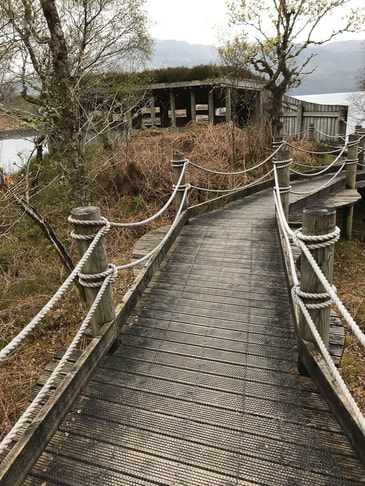 As we reluctantly left our eyrie we looked back at the camouflaged shelter and agreed. You don't have to see an otter to appreciate the grandeur and peace of staring out at water, imagining dialogues between its aquatic inhabitants. This is not a bucket-list selfie posting tourist opportunity and so much the better for it. Perhaps the lighthouse might have been more exciting but there was always time. And we had pictures to show Kate and Andrew (our daughter and her hubby) of sweeping vistas without another soul in sight. They love places like this. On our walk back we paused to smell the clean loch air and enjoy the Highland forest edging towards the water. All too soon we were back at the environmentally sensitive Resipole Farm Holiday Park. There will be another visit to the Ardnamurchan region. We need to spend an extended time around the shore of Loch Sunart. The last picture below is a wistful farewell So we don't know if the Ardnamurchan Lighthouse will have remained in Britain by the time we are able to return for another adventure. Maybe it will be a foreign holiday to enjoy the legendary hospitality we have experienced from Scottish people. Anyway, more of that in the next episode. The following morning we turned right at Salen (Sàilean). Yes, there's another one on Loch Sunart - wonder if it's "Twinned with Salen, Mull"? . We will travel west of there one day. You will have realised that we didnae do the whole peninsular but every view reminds one that Scotland has a very wiggly coastline. This is from Roshven, looking out towards Eigg and Rhumach. Behind those lie Rùm and Skye and beyond that the Outer Hebrides. Next stop Fort William. "D'you think that there's a Ben, Shan?" "Marilyn Munro, definitely!" "Great view for a campsite, issinit?" We'd furtled about (7.2M Campy doesn't take too kindly to repeated U-turns), trying to find the obscure address of our caravan park, but now we were staring at this splendid vista. But what did Fort William have to offer. Endless camping shops and pubs, it seemed. We needed a few specialist camping items and hadn't done a pub for a while. "So, let's hit the bright lights." "I'm up for it," Shan responded. We resolved to walk into town. It was further than we thought but we did pause for a fort and then some sheep, a couple of steam engines and the ubiquitous Ben (picture below). Our visit to the high street didn't start particularly well. I know climbers and serious walkers need to travel light but we needed water purification tablets for a 50l water tank. At climber's rates we'd have had to mortgage Campy. We decided to skip the shopping and find solace in a pub, possibly one that did food. We chose one "traditional" establishment. As soon as we stepped inside we realised it was one of those places the pubco thinks is what tourists think a British pub should be like. It did have a view of what we assumed was Loch Eil so we had one drink and departed, feeling a tad disgruntled. But not enough to give up just yet. If you think a town should have a bit more life, don't give up ... keep asking locals until you like what you hear. I don't know what swung it, maybe the delightful helper in the local bike shop, but we ended up at The Geographer; it was lively and enticing but full. We were not daunted and entered. Could we just buy a bottle of wine and wait, we asked? We couldn't, we were told: there simply wasn't enough room. With heavy hearts we turned to leave. The place looked perfect. "Hold on a sec, if it's just the two of you I can fit you in in an hour," our prospective hostess interrupted our disappointment. "If you like, you could pop around the corner to the Garrison West for a drink and come back in an hour." We took her advice. The look on Shan's face says it all (above). Not only were we welcomed by the staff and customers alike, we were allocated the best seats in the house. "We were sent here by The Geographer," we explained. "We all eat there, it's splendid." our server enthused. "Why don't you come back here after your meal for a nightcap." That was as much persuasion as I needed anyway. Shan was a tad unsure, not being a whisky drinker. Back to the Geographer and we were not disappointed. Unpretentious but the food showed thought and attention to detail. We seem to recall sharing a bottle of wine, too. Our cheeks were already ruddy by the time we returned to the Garrison West. Some mighty fine single malts beckoned. Shan's reluctance was soon overcome with a glass of Baileys and she matched me glass for glass as I tried as many superb whiskies as I dared. We hadn't really let our hair down since Buchlyvie. We got a taxi back to Campy. The driver was most friendly and understanding. He was an EU citizen. The next day we traversed one of the few routes in Scotland we had travelled before ... along the shores of Loch Ness. We decided not to pause and crossed the bridge above with the Beauly Firth to port and the Moray Firth to starboard. We were soon ensconced for a few days overlooking the sea at Rosemarkie. We had stopped off on the outskirts of Fort William for provisions and Aldi Gin - okay, I'm a cheapskate but Shan encouraged me to try out the foraged granite "iceblocks" from Mull. Lucky my name isn't Hendricks. What could be more relaxing than a G&T and gazing at the horizon with the mouth of the Moray Firth at one's back? Coming next: Mucking about in the Rosemarkie/Fortrose/Cromarty/Avoch environs
[Endnotes]
 Neither of us really wanted to leave Mull but the next segment of our road trip beckoned. We repaired to the pub to consider ferry options and mull over the important subject of whether Ben More was compatible with Marilyn Munro. Another hooley[1] had been forecast for the next day and we had to decide whether we should plumb for the big ferry to Oban or take a chance on a smaller ferry to the Ardnamurchan peninsula. To complicate matters for the latter (preferable) option, there were two sub-options: one from Tobermory and the other from Fishnish[2]. If we went from Tobermory, we could show Campy one of Mull's major attractions and I could follow every single tourist and try my hand at a picture of the colourful fishing port in all its glory. But Fishnish was closer and the roads on Mull are narrow. We did what most British tourists do and asked the publican. "The ferry's big enough from Fishnish. The logging lorries use it all the time," was the somewhat non-committal reply. "Would we need to book," I asked timorously. A fellow patron, a local, piped up: "Nae worries, mate. Just pitch up and it's first come first served." And he thought he was being reassuring. We did check a ferry timetable the next morning. It was a bit more reassuring but carried the normal caveat about the possibilities of hooleys. When is a Ben a Munro and a Marilyn and why's it relevant Armed with beverages and some grub, Shan and I repaired to a table by the window and mulled over the importance of the topic. It had briefly been raised on the bus from Fionnphort to Craignure vis-à-vis one of the splendours of Mull, Ben More. It had emerged from our splendid driver that Mull and Skye were the only Scottish Islands with "proper" mountains. We both ended up agreeing much later that the explanation was a Scotsman's revenge for an Englishman's description of the rules of cricket. I will attempt to simplify the protuberances. We all know Ben Nevis[3] is the tallest mountain in the British Isles, right? So all mountains in Britain are Bens? Nope. Is Ben Nevis a Munro? Yep. What are Munros? Mountains that rise more than 3000ft (914.4m) above sea level. Are there mountains in Britain that would qualify as Munros if they were in Scotland? Yes, indeed. Are they called Munros? Nope, they are called Furths (evidently because they are further away). Are all Munros as spectacular as each other? Nope, the more spectacular Munros are named Marilyn on account of their prominence (don't ask). Are all Marilyns Munros? Nope. A Marilyn is any peak that protrudes more than 490ft (150m) above its surroundings[4]. Can a Furth be a Marilyn? Apparently so. So a hill can also be a Marilyn? Of course. So we can have Marilyn Munro, Marilyn Furth and Marilyn Hill, just so long as they stick out enough. Does it get worse? Of course, we haven't yet considered Corbetts and Grahams (formerly known as Elsies). These also qualify as mountains in the British Isles, exceeding an altitude of 2,500ft and 2,000ft respectively. So we must be able to have Marilyn Corbett and Marilyn Graham, too? Sure thing. Are there more categories? Of course there are, but you and I have probably lost the will to live by now ... [5]. All this to demonstrate that Ben More (the one on Mull; there are two others) is, at 3,169 ft (966m) altitude and 3,169 ft prominence, a right-on Marilyn Munro and therefore a proper mountain. Back to reality Shan and I staggered back to Campy and our last sleep on Mull. In the morning, we set off in the general direction of Tobermory, still a little undecided. We got to the Fishnish turnoff and agreed it would be a crime to miss Tobermory and we had plenty of time to go there and back to Fishnish to get into the queue for the ferry. The road was mostly fine, except for where it wasn't. The last hill ended in a sudden drop down to the parking on the edge of the town. It had started from the ridge overlooking the Sound of Mull, and the mainland in the form of the Ardnamurchan peninsula. Tobermory is a gorgeous spot but we felt we could only really do it justice by coming back on another trip. After a quick sortie to a sarnie shop, and including my effort to photograph the waterfront, we were in a bit of a panic about getting back to Fishnish. As a cyclist I often find myself descending a hill in the excitement of checking out the attractions at the bottom and then regretting it when contemplating the return ascent. It was a bit like that with Campy. The climb almost qualified as a Marilyn in its own right. We acknowledged this when reaching the summit and peered down at the sea 450 ft below. We pressed on, having no idea of the traffic we might encounter back at the Fishnish ferry port and envisaging gargantuan timber lorries, backed up like post-Brexit Kent, and preventing us from ever getting back to the mainland. Instead we sat on an empty slipway for about two hours. The only lorry we saw was disembarking our ferry when it eventually arrived (middle below). We were the first vehicle to board. Only the horizontal wind sock shows how windy it was. Docking in Lochaline was a little hairy in the wind but, before long, Campy was climbing the steep hill out of the small port town on our way to our next destination in Resipole. The scenery on that stretch was one of sweeping grandeur. Loch Sunart cuts a deep swathe into the mainland between those two points and the last 12 miles of road follow its perimeter. This is thrilling for the scenery on its own but I was pleased to be wearing my brown underpants when confronting some of the aforementioned logging lorries on some of the twisting road's narrowest bits. The drivers of these leviathans are super confident in their experience of traversing this challenging terrain and come at you, steely-eyed at 100 km/h, coordinating their vehicular extremities to a millimetre. I never got time to get used to it. The last HGV we encountered was on the narrowest, twistiest section. It was being driven by a lovely fellow who was in no way menacing but simply could not go back. There was no space for him to reverse and he could see there was for me. I couldn't. I have to confess I was close to tears. The drive had already been pretty knackering. But we got through it with his expert directions, encouraging me into impossible corners, and we eventually squeezed past each other. I managed my best approximation of a cheery wave. Shan and I proceeded in trepidation and with great caution from there. Our HGV driver friend had told us that the last 5 miles to our destination were very winding and narrow. Intertwining two arthritic fingers I joined Shan in willing that nothing else would be coming the other way. Nothing was and we arrived at our spotless pitch where we could park Campy for the next two nights. It overlooked the loch, all the way down to Càrna and soon worked its magic. Coming soon: The road to the biggest Ben and beyond.
Endnotes:
Having spent the previous two days in an unrequited search for eagles we changed tack. After all we'd had two totally splendid days feasting our eyes on what was there. Red kites[1] and buzzards can frequently be seen from our own picture window in bucolic Oxfordshire. We refocused our attention by about one-and-a-half millennia. Backwards. Iona What had attracted an Irish monk, some feisty nuns and hordes of hippies to Iona over the intervening centuries. As far as we could establish, St. Columba and a few followers rocked up from distant Ireland to settle on a formidable 877 hectares and built the island's first Celtic chapel. The spirituality of the place has continued to this day and the hippies are still rocking[2]. Believe me, we got to Iona via a modern ferry and that was pretty scary with a hooley blowing. Even more so after wandering about the island's lanes and the hooley had stepped up its hooliness, causing some doubt as to whether the ferry would return to repatriate us to Mull. But, before that, we had to get from Craignure to Fionnphort, a distance of some 35 miles along a single-track road (with passing places). A daunting prospect for our behemoth, especially as we'd heard that some irreverent campervan owners were testing the forbearance of the normally kind locals. So the bus it was. The bus driver was polite but unsmilingly uncommunicative when we boarded the service for Fionnphort. We did warm to him on the outward journey, primarily because of his courtesy towards other road users, happily pulling off into a passing place to allow another vehicle to pass, even if it was overtaking us. Also because he took the time to stop along the way to deliver supplies to remote communities. When we arrived at our destination he parked in the allotted bays at the top of the incline. Greenhorns that we were, we had to ask him about the protocols for using the ferry and getting back in time for the last return to Craignure. His response was polite and accurate. We had a bumpy ferry crossing to Iona. Stepping on to terra firma was a relief and we set off to explore. Most of what we looked at is covered more than adequately in the tourist info. Kinda liked the path well-trodden (below) between St. Oran's chapel and the Abbey and Nunnery (it seems there are two nunneries today, this one may have been incorporated into the abbey as late as the latter's restoration in 1936, the island's religious significance having been paused for a good few centuries until less than 100 years ago[3]) Eventually the icy blast drove us indoors for homemade tea and cake (there's a theme developing here) at the Heritage Garden Café. En route to the café was a museum shop where we procured a slightly more chatty, and perhaps saucily controversial, Iona leaflet to study with our morning repast. Shan had decided (in my estimation, correctly as usual) that the older (probably original) nunnery was the most interesting place to explore more thoroughly. This was about a third of a mile SSW of the Restored Abbey. It seems that, since the 1760s, this nunnery has survived only as a set of substantial ruins . The challenge with Iona is that its aura has been built from some serious research and some seriously conjectural myth. This is part of the charm. Long may it continue. So, despite her inscrutable smirk, I dutifully followed my wife down the road. A few little hints over tea and cake had made the quest sufficiently intriguing to leave the warmth of the café and continue the pursuit of what could quite easily have been fiction (and may still be). After some peering through windows and taking in ruins of gable frames by gazing through arches, I had to be thrown a few morsels: "The first prioress of this nunnery is believed to have been Bethóc, sister of the founder of the abbey," my beloved intoned, "apparently it was quite an enlightened place for the early 13th century." It transpires that Bethóc's sibling, Ragnall mac Somairle, had founded the Benedictine Iona Abbey in 1203 and is said to have followed up with the Augustine nunnery sometime (shortly) afterwards. The intriguing bit for both of us were the rumours that the nunnery was a long way ahead of its time in terms of women's emancipation. Of course I am way out of my comfort zone with all this because I have never engaged in Religious Studies and have no concept of the differences between Benedictine and Augustine philosophies. I am just an ageing hack who loves a good story. I do try to check the facts but this is far beyond the realms of my capabilities. Lifetime academics[4] have pursued this stuff and still seem a long way from what actually took place 8 centuries ago, on a remote island, in a pretty far out location. While I ruminated on this, Shan seemed to be flitting from place to place, looking for something specific. When questioned, it may just be my memory but, I could swear she tapped the side of her nose before darting off again. "Found it," the shout came from the other side of a wall. I rushed around to see what it was all about. "There it is," Shan exclaimed pointing at this (below). "What is it?" I was puzzled. Understandably you may think? I hadn't had foreknowledge of appearances of Sheela Na Gig around Europe in the 11-13th centuries. Apparently, this could be one. On a brief tangent, there has been a local (English) controversy about the statue commemorating early feminist, Mary Wollstonecraft. Sculptor Maggi Hambling chose to surmount the tribute to the 18th century Enlightenment philosopher with a realistic naked woman with a very prominent adornment of pubic hair resembling a Brillo pad. Was this a prurient attempt at sensationalisation? Certainly the sculpture has been criticised for its depiction of nudity and objectification of the female form. The counter argument may be that it was a genuine attempt to celebrate the freedom of womanhood. It is not my place to judge, merely to draw comparisons with some Sheela Na Gig assertions involving the Iona nunnery. Is it prurient publicity seeking or is it a legitimate subject for conjecture? Was Sheela the embodiment of women's freedom in the early part of the previous millennium. Many far more learned people have tried, seemingly unsuccessfully, to establish its provenance. There is a convenient rock link right there, though. PJ Harvey released an eponymous song in 1992. And so back to the main island. His hooliness gave the ferry journey an appropriate frisson, though, as we pitched and rocked our way to the opposite slipway at Fionnphort. Best free tour ever The same driver who brought us to Fionnphort was taking us back to Craignure. At first he seemed to have the same disposition, too. Not for long though. This time there were only 3 passengers in his vehicle, Shan and I were joined by a charming Bostonian academic, brimming over with enthusiasm after her visit to Iona. Now she wanted to know more about Mull. I can't remember what her first question was to our driver but he looked at Shan and me and asked if we minded if he pulled over in a passing place to answer our new-found Bostonian friend's question more fully. We were delighted. "Take all the time you want," we chorused, "we aren't going anywhere at the other end." This was his cue. Full of humorous erudition underpinned by an encyclopaedic knowledge of Mull, the three of us were royally entertained for way more than an hour. There wasn't a question we asked that he couldn't answer. Fairly early on, there was a convenient stopping place with magnificent mountains in view. We learned that only Skye and Mull had proper mountains[5]. Then the subject of the relatively recent bridge to Skye came up. Apparently the Skye locals had mixed feelings about it. The island had become too busy, he thought. "But surely it means more revenue for Skye businesses?" one of us asked. "Not as much as you'd think. It's become a bucket list destination and many of the tourists arrive on a bus, take a selfie as soon as they set foot on Skye and then head straight back. It's easy now there's no toll." At one point we came upon two cyclists, struggling up a hill into the furious headwind. They still had more than half their journey to complete. "Need any help?" our man inquired, "maybe even pop your bikes on the bus?" "We should be OK," one of the pair replied, "it would be a cop out if we gave up now." "Not even a top up of water?" he persisted. "We still have plenty," she responded showing him her water bottle. "Well take care, won't you." We resumed our journey. As we were nearing our destination, the three of us brimming over with the serendipity of it all, the inevitable question came up: "Have you lived here all your life?" I think it was our friend who asked. "Not at all," our driver responded, "only a few years." "But ... ," as mentioned previously, he had not faltered once at a question. Some of the answers were very detailed and the questions contained some fairly obscure minutiae. "I love reading," our man replied with an impish grin that we could all discern in his rear view mirror. "Besides, how would you know if I wasn't just making it all up." We just knew he wasn't as we waved goodbye at the Craignure bus station. Coming up: A bit about proper Scottish mountains. Leaving Mull. Showing Campy Tobermory.
Endnotes: [1] In terms of wingspan, red kites are marginally smaller than golden eagles (source: RSPB) but the latter are about 3-4 times as heavy ... presumably mostly muscle. White-tailed eagles are even bigger the their golden counterparts. Red kites narrowly missed extinction not very long ago. [2] In spirit, anyway. I imagine an Isle of Wight rock festival replay would be less welcome in the 21st century [3] My maths - could be highly suspect. [4] This blog has absolutely no pretensions to be an academic discourse but I did a little bit of reading to check one or two things. I can heartily recommend Neil Oliver's 2018 tome, The Story of the British Isles in 100 Places, which is far better researched and more entertaining, to boot. Especially the anecdote, overheard in Oban, of a couple asking for directions to 10 (ten) NA. The quick run through in Wikipedia has a reasonable summary with a host of references and citations to follow if a reader wishes to dig deeper. [5] I'll return to this subject in my last Mull episode Of course they have white-tailed sea eagles on Mull. One just needs time and patience to spot them. A bit of luck, too. Along with golden eagles and otters. Having cycled to the Mull Eagle Watch, just west of Craignure, the day before with no time left to exercise that patience, the proverbial blank was drawn. So we hatched a plan. First cycle from Craignure to Salen and pop across the island to Loch Na Keal, a total distance of about 16 miles (around 25 Km). Sit on the beach and take in a plentitude of otter and eagle sightings. Cycle back. Could've worked. Only two things standing in our way: Shan had aggravated a a previous injury the day before and it was blowing the hooley of all hooleys when the day dawned (and continued to do so for several days). We'd been a little canny, though. There was a contingency plan in place. Scotland has excellent public transport (including the ferries). Plan B was to get the bus headed towards Tobermory. Hop off at Salen, switch to another bus to Gruline and walk the last one-and-a-half miles to the beach. Same in reverse after seeing otters gambolling and eagles soaring. Only, we'd missed the asterisk on the timetable, hadn't we! Salen-Gruline buses only operated on certain days (I think schooldays). We only worked this out when we got to Salen. Maybe we could walk the 9 miles across the island and back. It looked as if there'd be spectacular scenery. We'd kind of hoped for some tea and cake before we left Salen, anyway. The Coffee Pot looked inviting. It seemed sensible to verify our logic in comfort. We thought it best to run our plan past Laura, the owner of the Argyll House, which contained the Coffee Pot: "We were contemplating walking from here to the other side of the island. It seems the bus isn't running today. Is it feasible?" "Feasible, yes. Advisable, not," was more or less what Laura said while eyeing Shan's limp. "Any idea when the next bus back to Craignure passes through Salen?" we asked, not sounding quite as disappointed as we'd intended. We'd seen the cake. "In about two hours," Laura replied. We took our time over the cake and had a bit more to eat, besides. We still had some time to wait for the Craignure bus when Laura came over again: "My other half is driving over to the other side to see if he can spot some eagles and otters. He'd be happy to take you with him if you have the time?" We both did simultaneous enthusiastic Noddy impressions as we scuttled to settle our bill. Conservationists don't always like being kept waiting. We didn't want to spoil the generous invitation. It turns out that Laura's partner, Graeme Boath, didn't actually mind waiting. In fact he was waiting for his own reasons. He worked in Inverness during the week and then journeyed for 4 hours to Mull to be with Laura at weekends. Graeme had a few hours before Laura finished for the day. He was a photographer in love with Mull and it was infectious. The only thing we were worried about at this stage was whether we'd be back in Salen in time for the last bus back to Craignure. Our luck was in: Graeme's Dad was arriving later that afternoon so he had to be back anyway. Now I like taking a few photos, myself. But lens envy kept my equipment firmly in my bag. You can take a look at Graeme's link above do see why I readily bowed to his expertise and knowledge. The headline to this blog episode is a bit of a giveaway. We did not see one white-tailed eagle, golden eagle or sea otter. But it didn't really matter. Graeme patiently showed us where they lived. We learned a lot during the next few hours. White-tailed sea eagles were the biggest birds of prey in Britain. They lived in close quarters with golden eagles, which were about two thirds of their size. I never knew that! Golden eagles are the stuff of legends but, of course, Graeme was completely correct. Otters, too, were quite ornery creatures and could be quite horrible to each other. So we returned to Salen with memories of eagles' nests and otters' paths in amongst the always spectacular scenery and said goodbye to Graeme, thanking him for his generous hospitality. We may have even got a glimpse of Ben More on our journey. The bus home was still an hour away but it was a different, later bus. We sauntered up the road from the Argyll House to pass the time. Shan spotted something in the distance (first below). She thought it merited a little more attention. Shan does not like standing around waiting for things, especially buses. Looking up the road, I was immediately reminded of John Pauling and his Husky protestations. The local Mull roadside everything-workshop (middle above). So what was further on up the road (third above)? Thanks to my amazing wife we were about to discover one of the photogenic attractions that Mull is renowned for. No wildlife or soaring Bens. Just a couple of fishing boats that had been abandoned around 50 years earlier (below). I'm not going to claim that I was anywhere near being the first lightmonkey to take pics of these gorgeous artefacts and I'm certain I won't be the last. But who cares. We were having fun. After all, if you search for #leonardodicaprio on #Instagram there are more than 2 million posts and still climbing. Same can be said of #katewinslet, #merylstreep and #alpacino, all at more than half a million posts. Most of them subtly different. The only real surprise, apart from some delightful details, is that large chunks of iron remain at rest. Leave anything ferrous on our front lawn and it'll be gone in days. Mull's a bit different. We were filled with the overwhelming impression that the islanders genuinely care about each other and "foreigners" who appreciate their surroundings. Actually, this was a common theme as our road trip progressed through Scotland.
Coming next: More of Mull, why Bens are Bens, and kindness. In the meantime feast your eyes on this sucker parked next to the old port in Craignure; probably only lethal these days to anyone who attempted to launch it. Shall we give it a try, mes amis? In a Hooley? Forgive me if I appear obsessed with the parallels between the two nations of Scotland and South Africa. I wanted to call it two oceans but that would entice Southern pedants into a debate I'm not entirely equipped for: where do the Indian and Atlantic Oceans meet? I left you, a couple of months ago now, to sneak off to do a few Grockle impressions in the very same vehicle that made this Scottish Odyssey. I promised to be back after a few weeks but that nasty ol' Covid-19 bistid[1] postponed the resumption. So here we are, back in Craignure, Mull, enjoying the peace that was ours in April 2019. Before all the excitement that was to follow on our return from Bonnie Scotland. Sun creeping towards the horizon; rowing boats pulled up for the night; a gentle susurration almost imperceptibly rippling the surface of the Sound of Mull; a small child gathering shells in the distance while her parents grab the last rays; absolute bliss. The good news is, we don't have to to anything tomorrow. The other good news: there are so many things to do tomorrow, only if we feel like it. Tomorrow dawns and a gentle cycle ride to familiarise ourselves with the environment seems a braw (lekker) way to ease into our sojourn on Mull. On our way over on the ferry, still smarting from our contretemps on the mainland, we spotted a majestic edifice as we entered the Sound of Mull. Duart Castle, we discovered. A reasonably flat and more-or-less along the coast 12 km round trip. Shan hadn't been out on her bike for a while. It would be a good test that we could extend a bit if we felt so inclined. There was also a Scottish National Trust cafe where we could grab a spot of lunch. It was a serendipitous decision for more than one reason, the first of which was a spectacular ride on good roads with not a car in sight (well, on or two on the access road who passed us at a snail's pace). The other reason was a connection that slowly entered my brain as we meandered around Duart's rugged estate. In the preceding blog to this one, I mentioned the Stewart family from Appin and their kayak paddling prowess. I have two other long standing mates who are both extraordinary paddlers and who seem to go from strength to strength as they close in on their 70th birthdays. The three of us were at school together from 1965-1968: Guy Haines, Rob Maclean and I. Sadly their athleticism never completely rubbed off on me. Guy and Rob continue to snaffle all the seniors' paddling trophies in our old stamping ground. So kayaking had obviously subliminally insinuated itself in a memory recess by the time I read the plaque below. Before I continue, I need to turn to Rob's prowess as an organiser. He has been the driving force behind keeping the alumni of our "68" year together over all these years. I helped him a bit in the earlier stages but the man is tirelessly relentless. He does not give up. 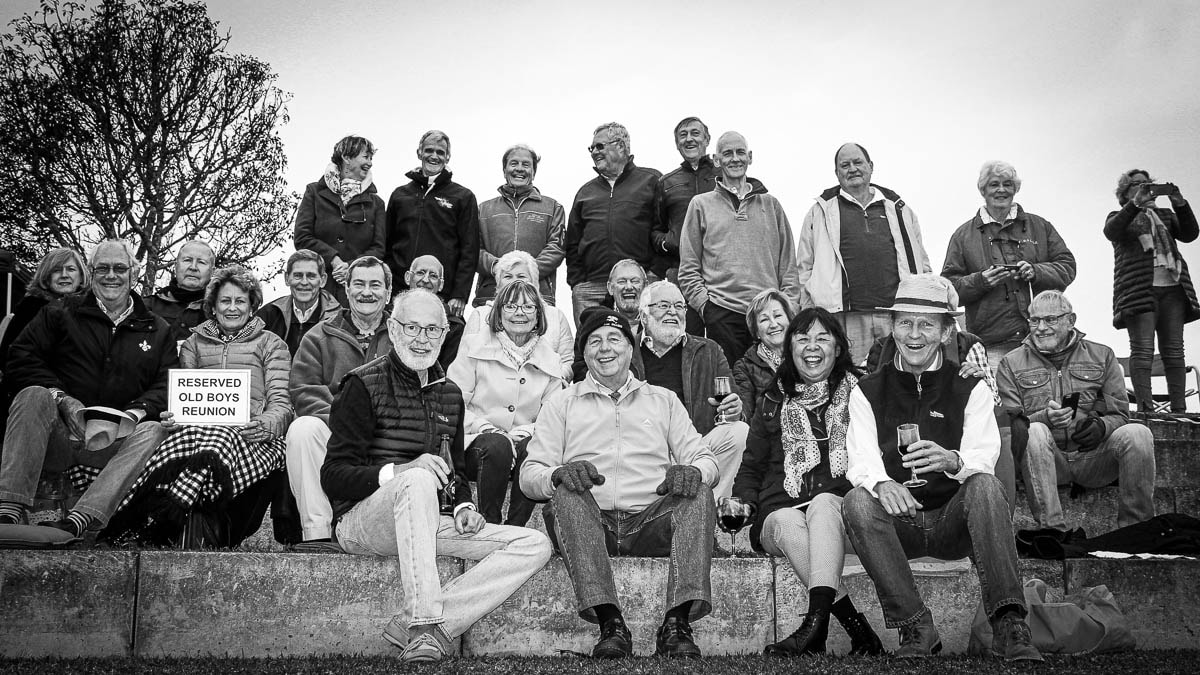 In deference to colour not having been invented when we were in our final year at school (and possibly to tone down Peter Clarke's luminous sock), this is re-rendered evidence of Sandy and Rob Maclean (top left) surveying their work proudly. There are alumni from at least three continents in this picture. The legendary Wally Fry seated on the extreme right of the second row (seated). Rob had been plugging away at Wally's defences for years to get him to attend the bash. I think only the Macleans thought it could be done ... import Fry from Australia for a reunion. Back to Duart Castle and the subliminal connection. I was reading the plaque in the middle picture below and spotted the Maclean name. Call it an earworm or whatever you like but I'm sure Shan will bear me out that I mentioned to her this lingering memory that Rob had told me about an ancestral castle in Scotland. Duart Castle on its splendid headland. Some details of the castle's history. Rob and Sandy Maclean presiding (at an altogether different event 9,000 miles South) It gnawed away until I posted the picture on the left on Facebook on the 16th of April last year. This was Rob's reply: "Morning Harri - yep, that's the place. I attended a Clan Gathering there in 2012 with my brother, his 2 sons and his grandson, to celebrate 100 years since the castle was refurbished by the then Chief of the Clan, Sir Fitzroy MacLean. The event was hosted by the current Chief, Sir Lachlan MacLean. It was an amazing few days and there were some 1500 MacLeans at the gathering! I even met my namesake - there he was with a name tag on his jacket...'Rob MacLean - Sydney, Australia'. He was one of the pipers who played at the gathering. My wife, Sandy, son Iain and I spent a week on the Isle of Mull back in 2006. Incredibly, we had sunshine for the entire time that we were there and so were able to tour it extensively. A truly beautiful place. Thanks for posting the pic." Of course he was there! And BTW, he's the only person on the planet who calls me "Harri". I'm choosing to see it as a mark of affection. Fed and watered at Duart's cafe, Shan and I moseyed back to Craignure and carried on out the other side, this time in a North-Westerly direction. Intrigued by the eagle watch with no eagles at that time of day, we resolved to return the next morning and then cycle on to Salen and cross the island at its narrowest point. "My lamb," Shan intoned as we were heading back to Campy, "do we have to leave so soon?" "I'll speak to the management in the morning," I responded, "ask for a couple more nights." Oh, and by the way, the Atlantic meets the Indian Ocean at Cape Agulhas. Rob lives in Muizenberg. Coming soon: Mulling a bit more about this enchanting island. Endnotes:
[1] A word Seffriikin Grockles use as a riposte to contradict any queries about their ancestry. With monstrous head and sickening cry And ears like errant wings, The devil's walking parody On all four-wheeled things.[1]  Seen here beside great beauty and our first proper (big) loch of the trip, Campy's pompadour and wing mirrors can be enticing or intimidating depending on the immediate purpose. One Poem My Scottish friends might be baffled by my quotation from a well-known English nationalist? The answer is complex. There is that intangible romanticism about Scotland that so many of us cling to. I have let on, in my previous episode of this blog, that I have a certain not-quite-evanescent tie to Scotland via my Gran, Molla. I found my tenuous links reflected in GK Chesteton's ironic poem and his claim: "that his mother came of 'Scottish people, who were Keiths of Aberdeen'. He goes on to say that 'partly because of a certain vividness in any infusion of Scots blood or patriotism, this northern affiliation appealed strongly to my affections; and made a sort of Scottish romance of my childhood'".[2] Or maybe I'm just an opportunist looking for a description of the behemoth that carts us around on these expeditions: "The tattered outlaw of the earth" is soon to become more tattered ... But first we must pause to admire the vast swathes of water and crags and peer into the distance over Loch Linnhe with our mid-morning tea. There is a dedicated cycle path that starts in front of us. It is part of the still-to-be-completed Sustrans[3] traffic free route from Oban to Inverness and it is very tempting for us to get out our bikes and pootle along the coast.  A peaceful pause in the journey in the vicinity of Appin, home of the Stewart (Joan and her son, Robbie, are mentioned in a previous blog) ancestry, although not necessarily the house in the picture.. Little wonder that Robbie and his son, Murray, turned into world class paddlers. Olympic gold medallist in Murray's case, who could know what Robbie might have achieved had he not had his heyday in the Apartheid years. Ironically, his family was strongly condemnatory of that regime. But Shelley-ann (Shan) has always wanted to spend some time in Oban and Scott has given us a list of other delights to visit if we have time ... Another, more authentic, Poet None other than than the great Robert Burns, in addressing a mouse: "The best laid schemes o' mice an' men Gang aft a-gley." Actually, donkeys are bigger than mice by anyone's reckoning, but do they go further a-gley? Yiz shall find oot ... Many of you will have come across the Mars bar benchmark, the inflation indicator. The standard bar remained an identical size for many decades and it was theoretically possible to calculate the value of a pound today vs. some time in the past depending on the prices now and then. I'm going to steal this concept and try to apply it to Minis. 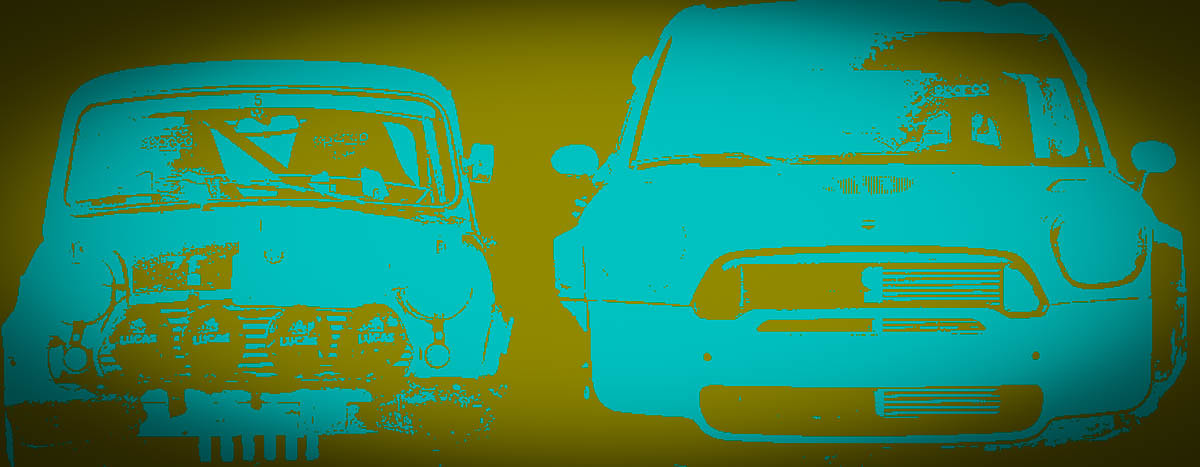 The above picture, stolen from a mini brochure and messed around with a bit without altering the proportions, shows a latter day Mini (R) alongside an original version, dating from about the last time most UK roads were altered (and resurfaced). Every now and then some highways authority widens a bit of a road but it becomes too difficult (read expensive) in most spaces, especially urban ones. The new mini is almost 40% wider, taking into account "ears". Therefore, two cars that might have comfortably squeezed past each other within 3 metres would, in current guise, need another metre. A motor home and a Volvo (similar in width, especially if the Volvo is equipped with errant wings for towing a caravan) would need close to another metre on top of that. Very quiet roads in Scotland are absolutely fine because they sensibly stick to single track roads with passing places and the Scots are generally very courteous about giving way. It's a bit more awkward on highways such as the A85 that carries most traffic from Oban North towards Fort William. We were travelling south and joined the A85 just beyond of the sanctuary of the Connel Bridge, an old iron structure that can only accommodate single file traffic.  So all you need is an almost perfect storm when you rejoin bidirectional traffic. Google street view helpfully provided a little inverse serendipity here. Add a few workmen (ones you have no wish to decapitate with errant wings) on the pavement on the left and honest gov ... BANG. "Was that a mirror?" I asked my wife fearfully. "Yup," was the reply. I'm pretty sure the occupants of the other vehicle felt equally as devastated. Our holidays, nay our lives, were ruined. Depression set in as we sat around for an hour or so exchanging details and reconnecting the mirror to the tattered outlaw. Shan had painstakingly run along the road retrieving all the pieces Needless to say, Shan and I'd lost the appetite for a leisurely stroll around Oban let alone exploring some of the more ambitious items the Scott had suggested. We repaired to a supermarket car park and bought some sandwiches that we ate listlessly while I had a deep and meaningful chat with the Insurance company. I suppose one consolation was the existence of mobile phones. I guess they didn't have those in the early 60s, the days of original Minis. A couple of hours later we drove gingerly on to the ferry to Craignure on Mull.  At long last we no longer had to drive for a while. I still marvel at the excellent ferry network for its frequency and value for money. Who needs a bridge to feed the selfie brigade? Our motorhome site was a few hundred metres from the destination quay as you'll see in the following episode. And we were so stoked with our pitch that, with Campy aligned and Shan thoughtfully placing a perfect G&T in my hand, the whole incident slipped into perspective. Sadly the mouse won in the tragedy stakes, poor little mite. He lost his home, we cracked a mirror. Coming soon: Mulling over Mull and some REAL serendipity.
Endnotes: [1] The Collected Poems of G. K. Chesterton (Dodd Mead & Company, 1927) (with one minor amendment!) [2] Actually, this text may have have been taken out of context for my own convenience and trickery. For more detail, I'll defer to The National and Joseph Farrell's examination of the influence of Scotland on the English writer GK Chesterton [3] The UK network of cycleways  I'm pressing pause while I sneak off for a while to find shorter anecdotes that may interest you. I'll be back to bring you the serendipitous anecdotes from Mull in a few weeks' time. In the mean time random anecdotes and pictures will appear here. I've never really known why the name Glencoe evoked an ephemeral sadness in me. The tenuous links between Protestant ancestors fleeing English tyranny so they could rule over even less fortunate indigenous people at the Southern tip of Africa, perhaps? Shelley-ann (Shan) and I certainly had a few ancestors amongst that lot, hers Irish Huguenots[1] and my Gran, Molla, certainly claimed to be Presbyterian when it suited her. In recent years I have heard a number of conflicting theories as to how she was remitted (escaped?) to Zimbabwe[2] finally ending up in Durban in Kwa Zulu Natal (KZN). She grew up as May Graham and may actually have been English but cherished the Scottishness of her maiden name. And she was the supreme Royalist from the Saxe-Coburg-Gothas (a.k.a. Windsors), Stuarts, Romanovs to the Reza Pahlavis. The rest of my family were almost entirely descended from dastardly Ungrish and my beloved Grandad, Cecil, was born in what had been the Boer Republic of Vryheid. Shan also had ancestors who were Norwegian[3] missionaries in Northern KZN, too. Why is all this relevant, you may ask? Maybe it isn't but it is true that a cluster of towns exists in this area of South Africa, with its vast reserves of low grade coal, that owes its names to what I imagined to be Scottish and Northern English coal mining towns. Along with Newcastle and Dundee, Glencoe was one of them. The first time I saw Glencoe, KZN a vision of slagheaps embedded itself in my memory. A sad-looking place for sure. Then there was also the region's ongoing turmoil between the Zulus, Boers and British. Rorke's Drift and the other battlefields draw tourists from all over the world to this day, despite the slag heaps. But if it was a beauty Pageant  Glencoe in Scotland, a glacial valley encompassing the River Coe and the eponymous village at the foot of the mountains, would win hands down in the magnificence pageant. Probably not as decisively on the sadness quotient, though: In the area around KZN's Glencoe, over a period of more than 60 years, thousands of Zulus, Boers and British died, not quite in full view of the towering beauty of South Africa's Northern Drakensberg, however. Equally, pure numbers cannot diminish the symbolism of the tragic massacre that occurred in the Scottish Highlands. If this sounds a little like a tortuous piece of logic, it is a clumsy attempt to explain the frisson the name "Glencoe" stirs up in me personally and that I mentioned in the introduction to this blog. Effectively, it punches above its weight. I would add that I'm pretty confident of not being alone in this, given the number of towns around the world that share its name. In fact, we chose to stop at Glencoe for a number of reasons, not the least of which were the magnificent views from Campy during the drive from Buchlyvie, starting out with lush riverside forests and culminating in the mountain passes on the approach to our epic camping site (pictured above). We had also recently become members of the National Trust for Scotland which was opening its impressive mountain eyrie Visitors Centre while we were there. In the centre there is plenty of info about that part of the Highlands as well as Glencoe itself, from walking and climbing to local history. The centrepiece is a theatre where one can see more vividly, inter alia, the events of the symbolic night of the 13th of February, 1692, in which an estimated 30 members and associates of Clan MacDonald of Glencoe were killed by government forces, apparently for failing to come to heel. The facts are rather murky and require a deep understanding of the Royalist vs. Jacobite conflict that persisted for more than 50 years and in which alliances shifted continuously between London, Paris, Inverness and the Highlands. My head is spinning as I type. A PhD in this era of Scottish history would be a minimum requirement to grasp the shifting factions and an understanding of why Scots feel so passionate about it to this day. Scotland narrowly stayed in the UK at the recent independence referendum but don't ask me to bet real Scottish Pounds on the same result following Brexit. A bit more on this subject when we get to Culloden. And then there were Lochs  Should you have a little flexibility to make the best of touring Scotland, take your time and smell the roses. If you're hoping to add the North Coast 500 to your bucket list, this blog is the wrong place to look. Here's the link and you're on your own. Mind the potholes in/on your Lambo/Ducati. We'll just sit on this bench after a decently relaxing walk down from the campsite and enjoy the view. No selfies allowed ... well, occasionally. If they're relevant to the yarn.  And then there are the possibilities to relax and exercise a wee bit of artistic licence ... a proper museum, a mini-mart that has most things you need for all kinds of everything. Pub and Cafe with proper smelly socks. The joys of taking it slow! Our leisurely ramblings included, (illustrated from top to bottom above):
 And then, of course, there's the sunset on west-facing mountains. Nice touch Glencoe. Au revoir... Coming up: A bit of a SNAFU and then a lovely island evening
Endnotes: [1] Note to Jane R: Please correct my #Roaminations if I am wandering too far from verity. [2] At that time known as Rhodesia [3] An important piece of info when we get to the Viking reunion we were looking forward to at the end of our Scottish wanderings. |
AuthorMark Harrison - making travelling an adventure Archives
April 2024
Categories |






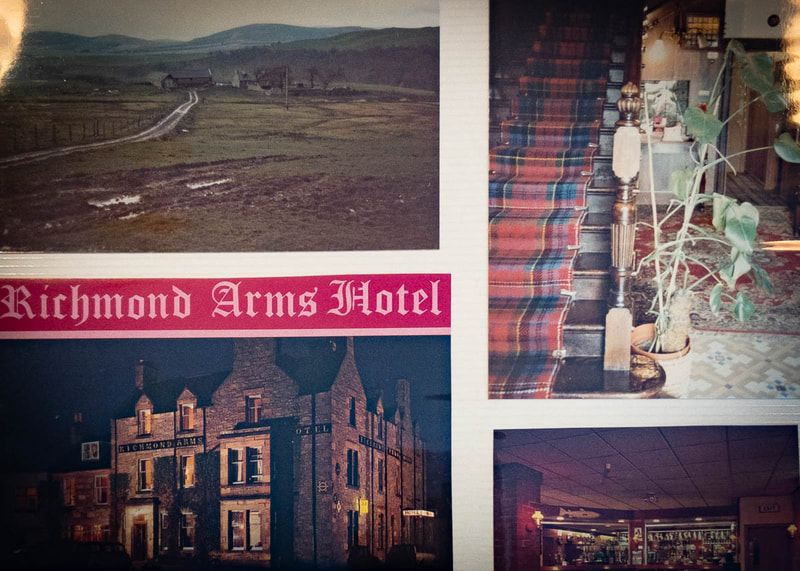


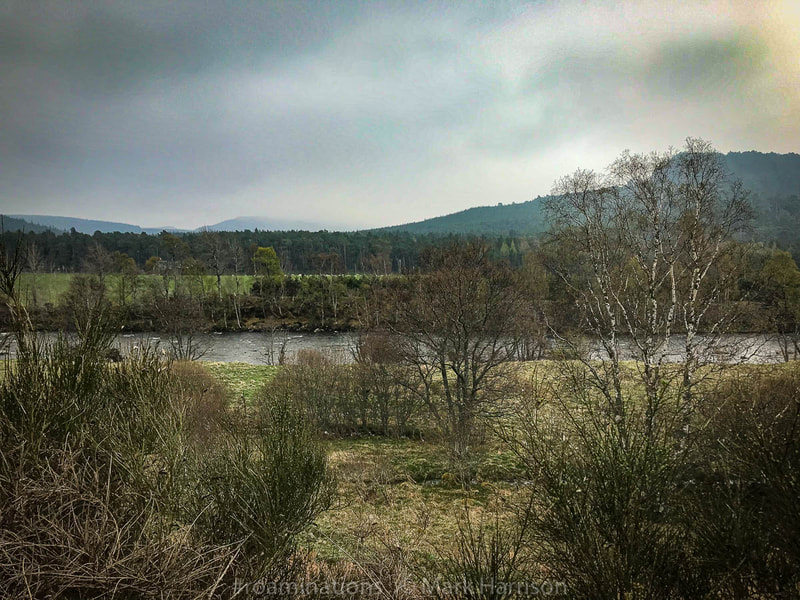




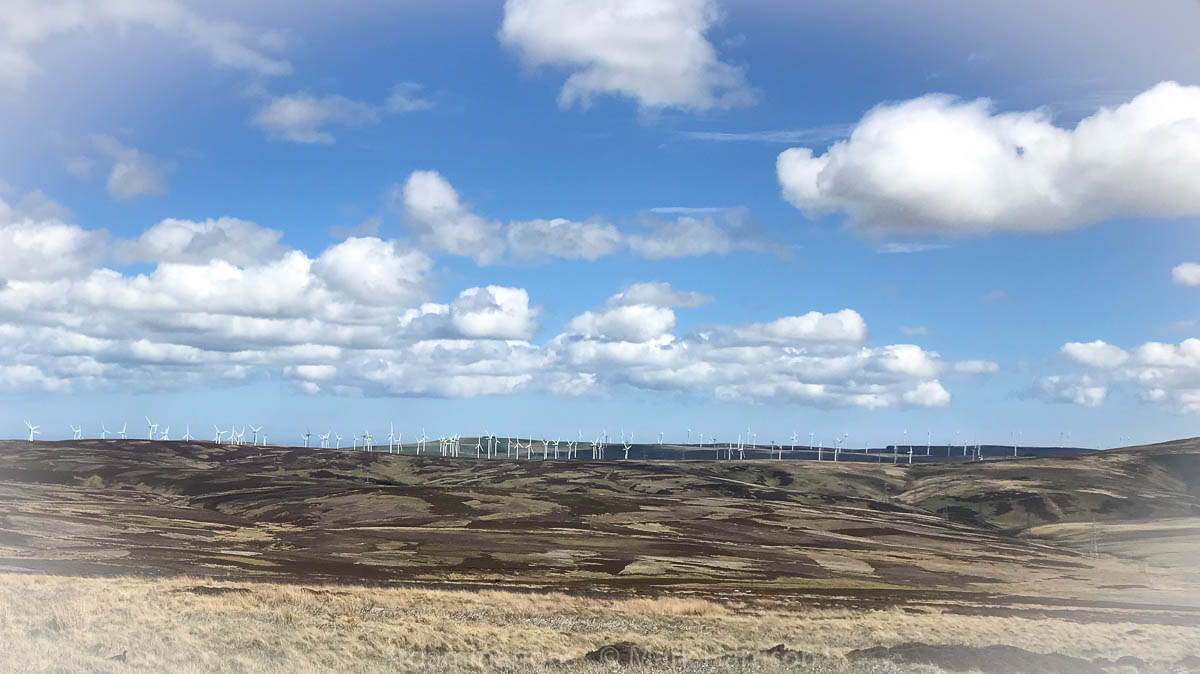
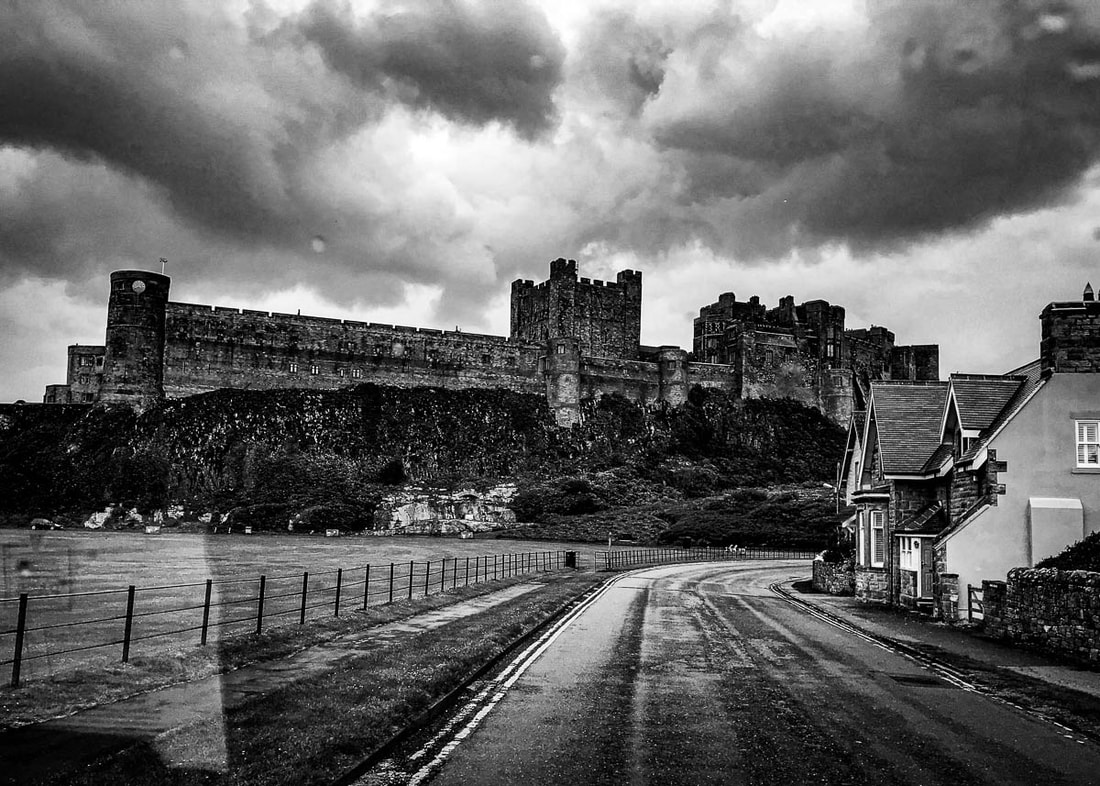




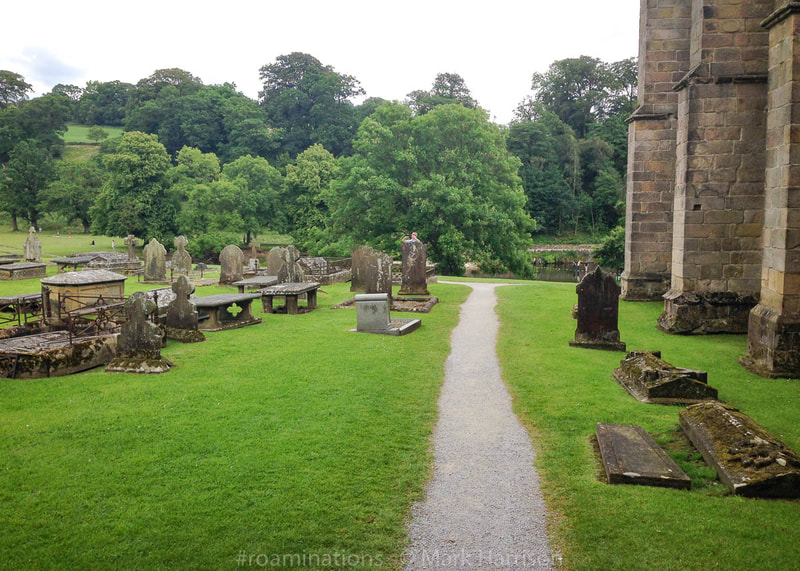










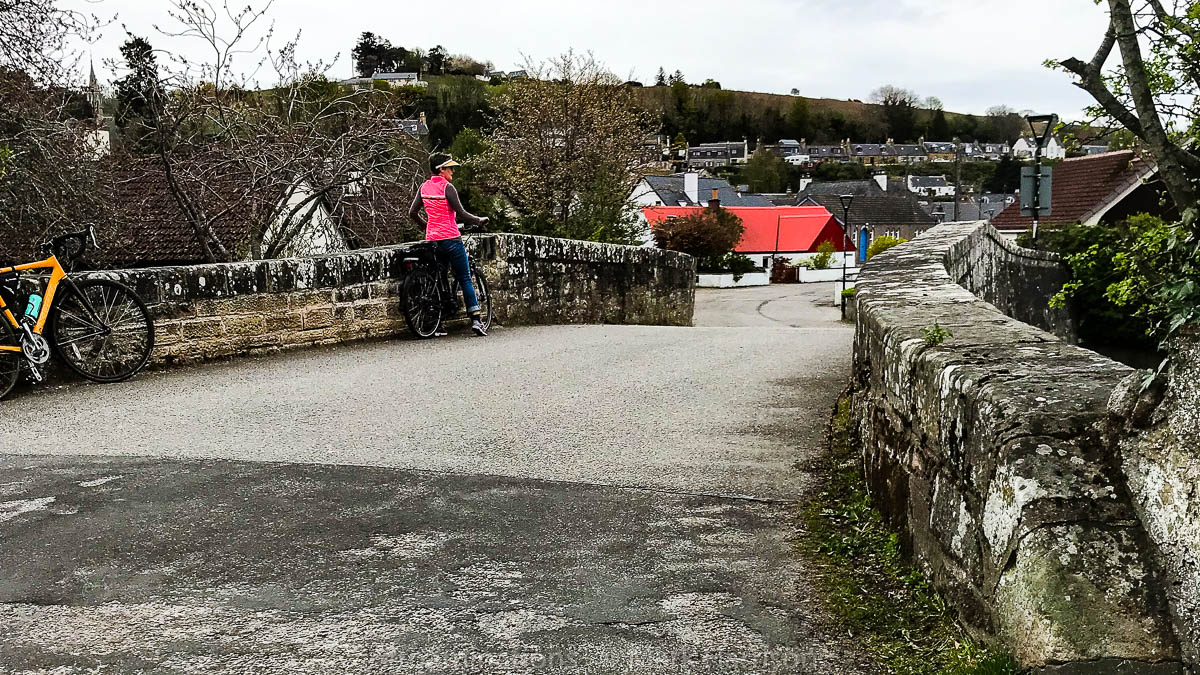





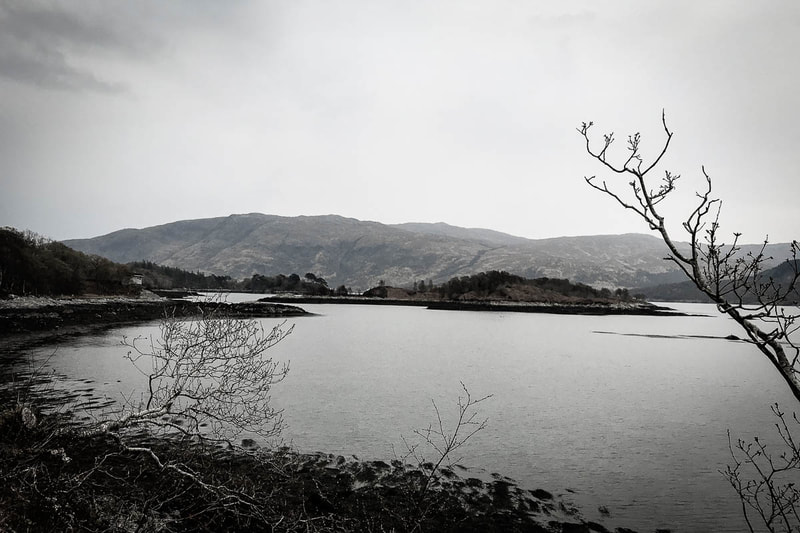
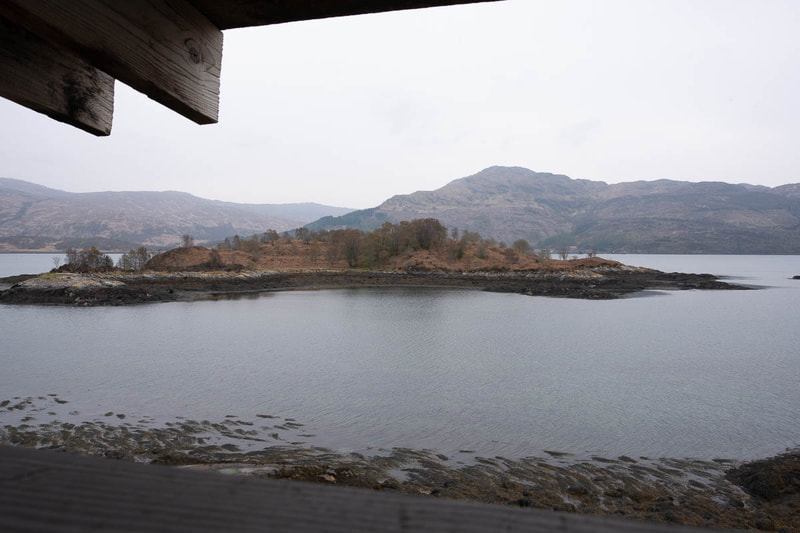





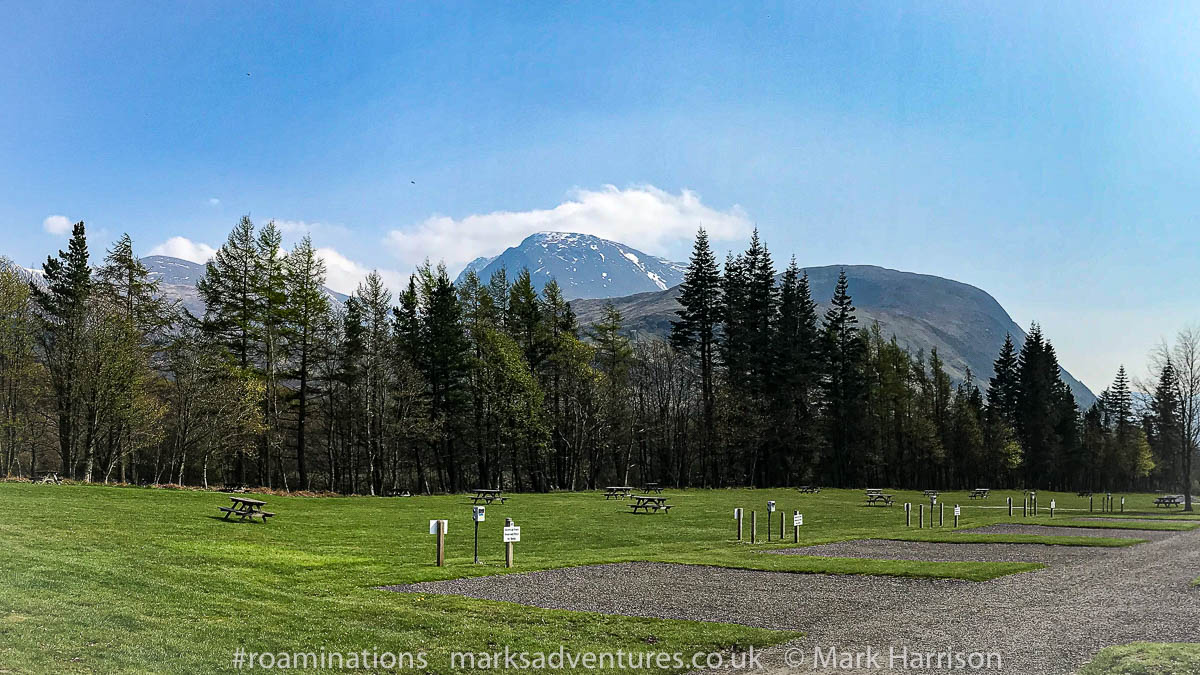










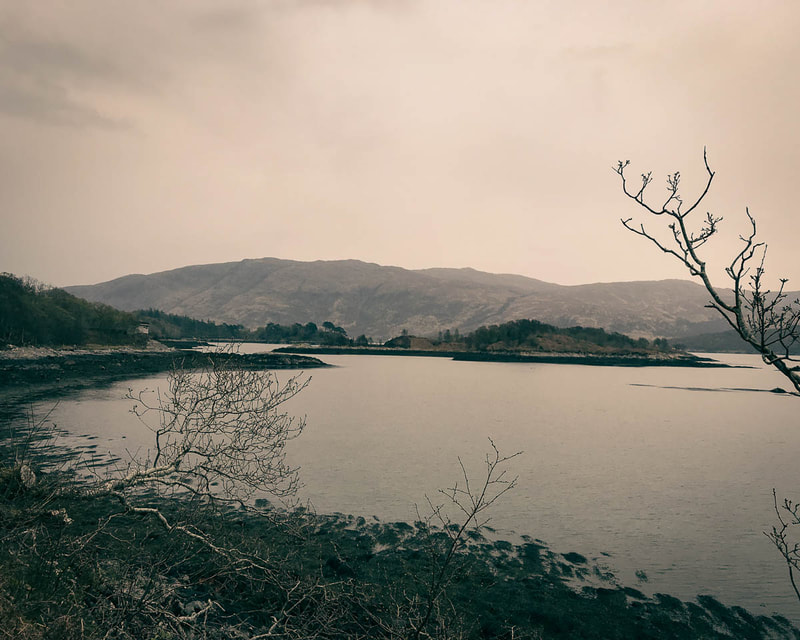




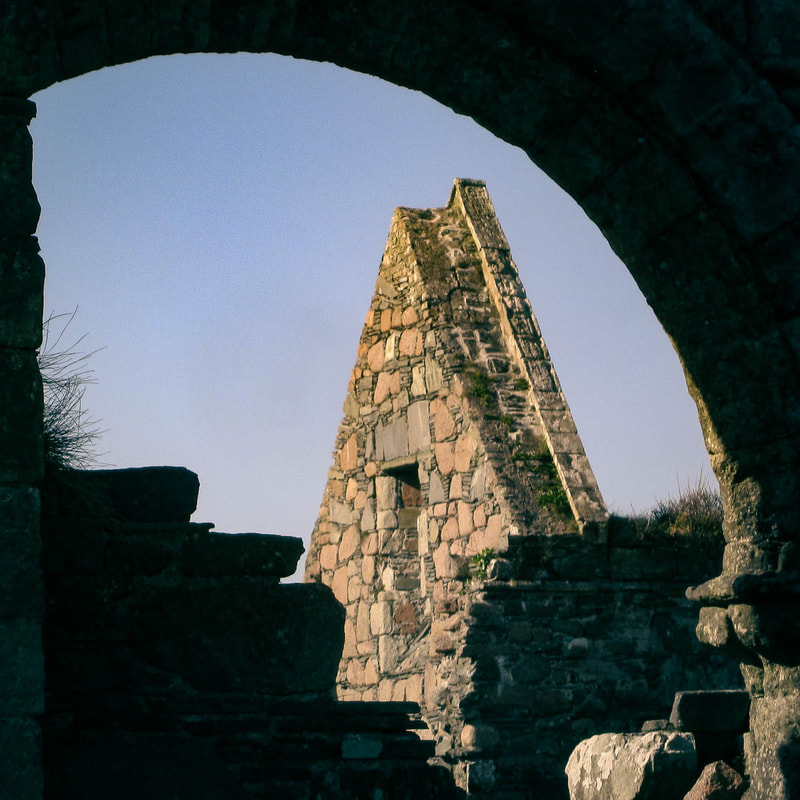
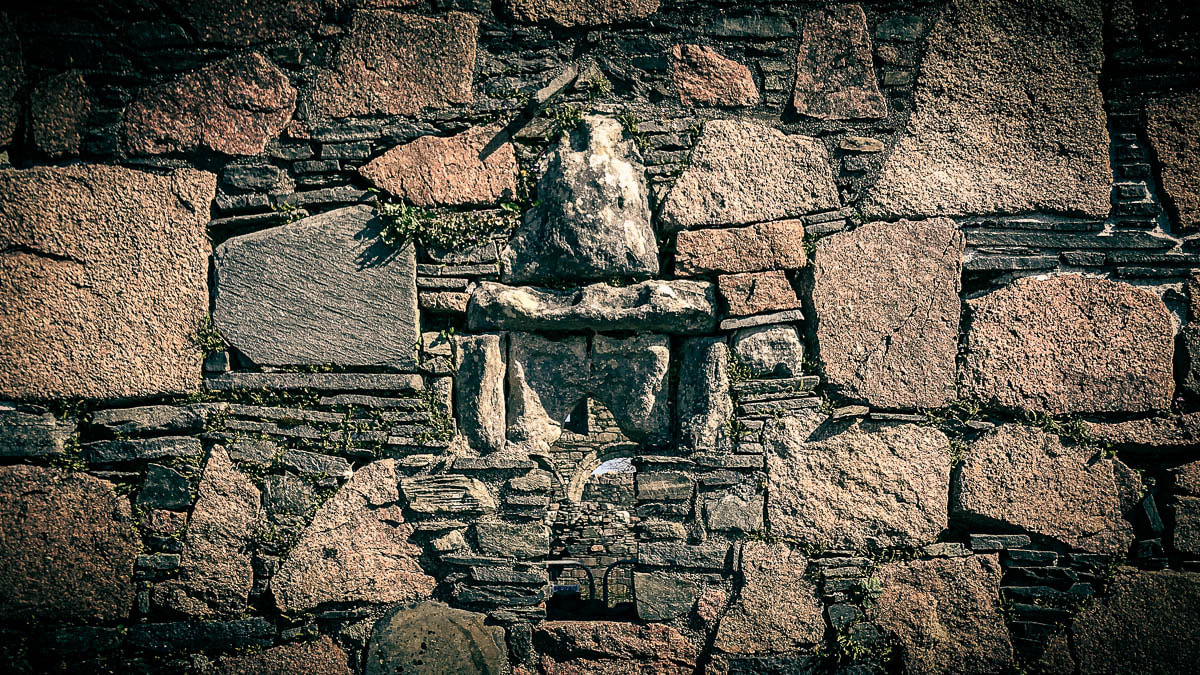










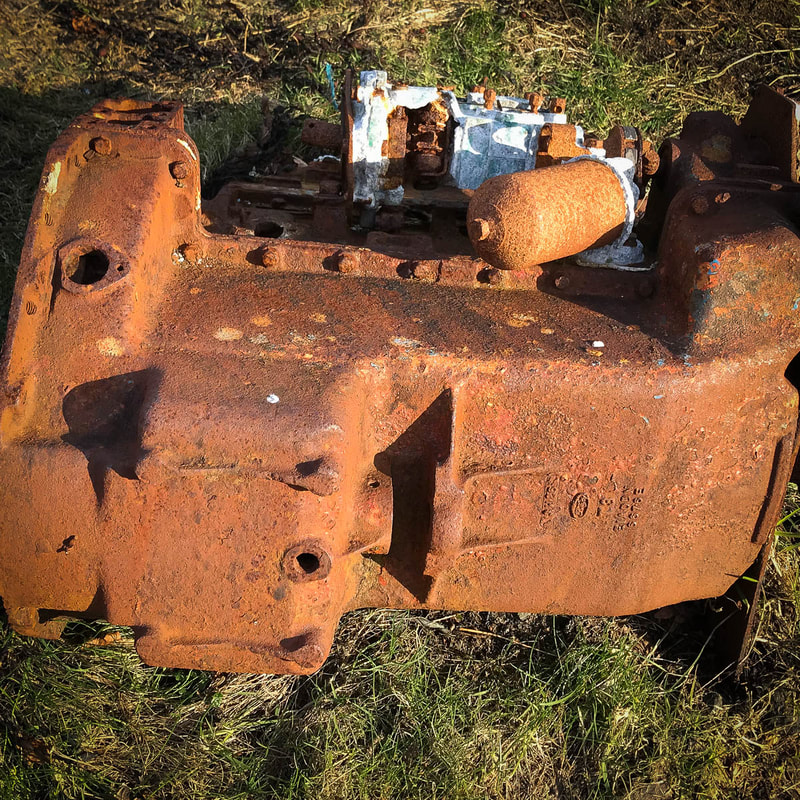







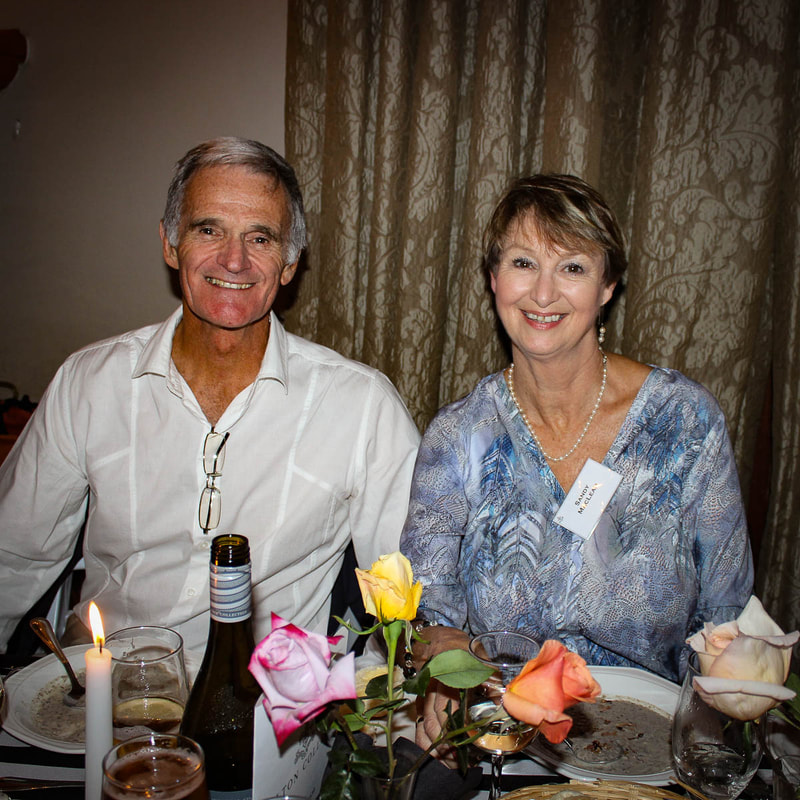

 RSS Feed
RSS Feed